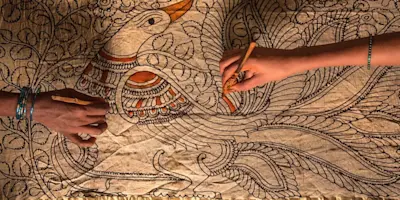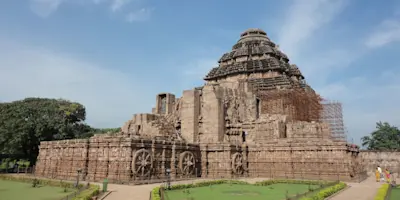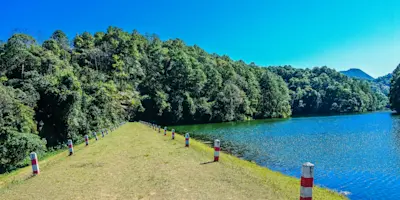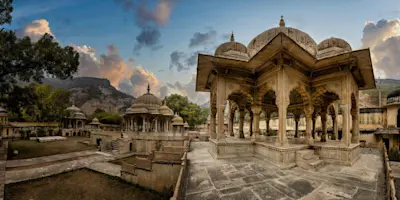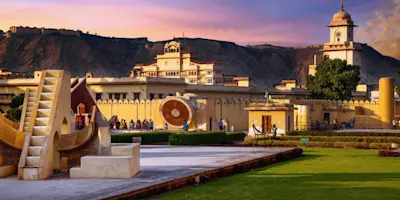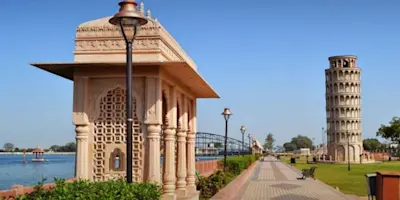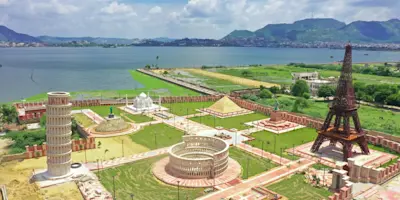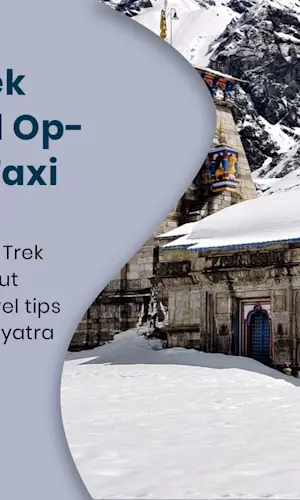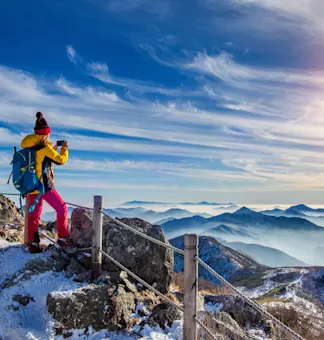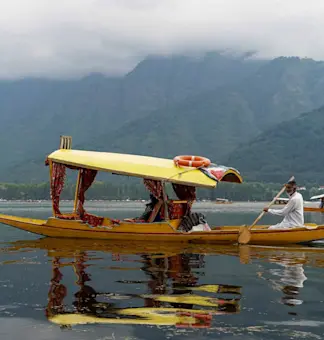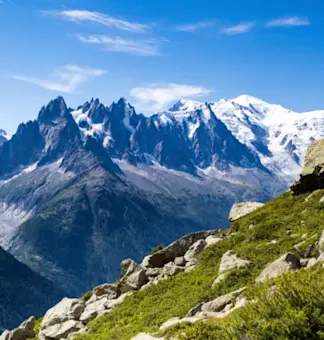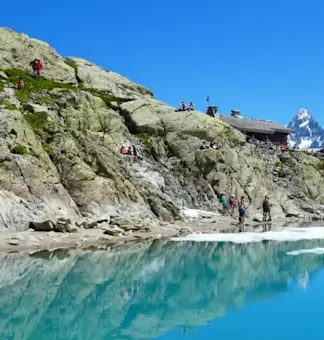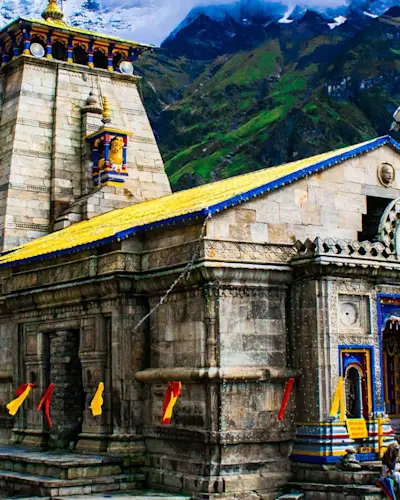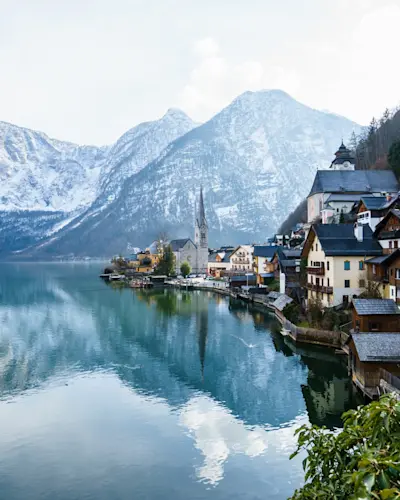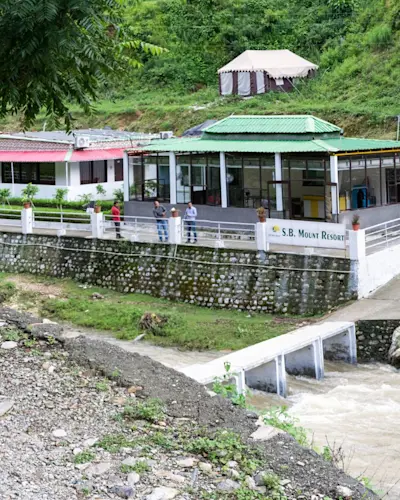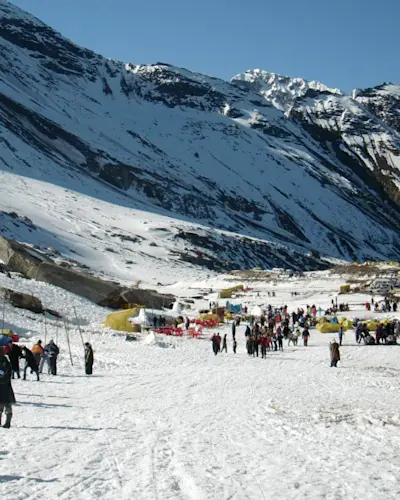🏔️ Kedarnath Trek Guide & Travel Options | Travel Taxi
Discover everything you need to know about the sacred Kedarnath trek, a challenging yet spiritually rewarding 16 km journey to Lord Shiva's majestic Himalayan temple. Our comprehensive guide covers trekking routes, transportation options, preparation tips, accommodation choices, and essential insights to ensure a fulfilling and safe pilgrimage experience.
Table of Contents
Introduction
Kedarnath Trek Overview
Getting to Gaurikund: The Starting Point
Trekking Options and Routes
Trek Difficulty and Preparation
Best Time for Kedarnath Trek
Accommodation Options
Alternative Travel Methods
What to Pack
Physical Preparation
Spiritual Significance
Safety Tips and Considerations
Nearby Attractions
Frequently Asked Questions
Travel Taxi Services for Kedarnath Yatra
Introduction
The Kedarnath trek represents one of India's most significant spiritual journeys, leading pilgrims to one of the 12 Jyotirlingas and an important part of the revered Char Dham Yatra. This ancient temple, dedicated to Lord Shiva, rests at an altitude of 3,583 meters (11,755 feet) in the majestic Garhwal Himalayas of Uttarakhand. The challenging yet profoundly rewarding trek tests physical endurance while offering unparalleled spiritual connection amidst stunning Himalayan landscapes.
Each year, thousands of devotees and trekking enthusiasts undertake this journey, navigating the 16-kilometer route that winds through breathtaking mountain terrain. Whether you're a religious pilgrim seeking blessings or an adventure seeker drawn to the Himalayas' mystique, the Kedarnath trek delivers an experience that transcends the ordinary, combining physical challenge with deep cultural and spiritual significance.
As pilgrimage expert Dr. Ramesh Bhatt explains, "The Kedarnath yatra isn't merely a physical journey but a transformative experience that has purified souls for centuries. The challenging path symbolizes the obstacles we overcome in life before reaching divine presence." This comprehensive guide provides everything you need to know to prepare for, undertake, and fully appreciate the sacred journey to Lord Shiva's magnificent Himalayan abode.
Kedarnath Trek Overview
The Sacred Route
The Kedarnath trek follows a well-established 16-kilometer path from Gaurikund to the ancient Kedarnath Temple. This route has been traversed by pilgrims for centuries, though it was partially reconstructed after the devastating 2013 floods. Today's path provides a safer but still challenging journey through some of the Himalayas' most stunning landscapes.
Key Trek Statistics:
Distance
: 16 km one way (32 km round trip)
Starting Point
: Gaurikund (1,982 meters/6,500 feet)
Destination
: Kedarnath Temple (3,583 meters/11,755 feet)
Elevation Gain
: Approximately 1,600 meters (5,250 feet)
Average Trekking Time
: 6-8 hours uphill; 4-5 hours downhill
Trail Type
: Stone-paved path with steps in many sections
Difficulty Level
: Moderate to challenging
Stage-wise Breakdown
The trek can be divided into several distinct stages, each offering unique experiences and challenges:
Stage 1: Gaurikund to Jungle Chatti (4 km)
Initial steep ascent through forested areas
Several small shops and rest areas
Multiple stream crossings via small bridges
Average time: 1.5-2 hours
Stage 2: Jungle Chatti to Bhimbali (4 km)
Moderate ascent with some level walking sections
Fewer facilities but some tea stalls available
Beautiful valley views begin to emerge
Average time: 1.5-2 hours
Stage 3: Bhimbali to Linchauli (3 km)
Steeper sections with increasing altitude effects
Mountain views become more dramatic
Weather can change rapidly at this elevation
Average time: 1.5-2 hours
Stage 4: Linchauli to Kedarnath Temple (5 km)
Final and most challenging stage with steeper ascent
First views of the Kedarnath temple complex
Thinner air becomes noticeable
Dramatic mountain panoramas
Average time: 2-2.5 hours
Significance of Key Points
Gaurikund: Beyond being the trek's starting point, Gaurikund holds religious significance as the place where Goddess Parvati meditated to win Lord Shiva's affection. The natural hot springs here are considered sacred, and many pilgrims take a purifying dip before beginning their journey.
Kedarnath Temple: Dating back over 1,200 years, though local legends place its origins much earlier, this stone edifice is one of the highest-situated temples in India. Its remarkable architecture withstood the 2013 floods that devastated the surrounding areas, which many devotees view as testament to its divine protection.
Getting to Gaurikund: The Starting Point
Before beginning the actual trek, travelers must first reach Gaurikund, which serves as the gateway to Kedarnath. Various transportation options are available depending on your starting location.
From Major Cities to Gaurikund
From Delhi to Gaurikund:
Distance: Approximately 500 km
Duration: 12-14 hours by road
Recommended Route: Delhi → Haridwar → Rishikesh → Rudraprayag → Sonprayag → Gaurikund
Travel Taxi Service: Premium sedan or SUV transportation with experienced mountain drivers, starting from ₹12,000 one way
From Dehradun to Gaurikund:
Distance: Approximately 250 km
Duration: 8-9 hours by road
Recommended Route: Dehradun → Rishikesh → Rudraprayag → Sonprayag → Gaurikund
Travel Taxi Service: Comfortable vehicles with local drivers familiar with mountain roads, starting from ₹8,000 one way
From Haridwar to Gaurikund:
Distance: Approximately 220 km
Duration: 7-8 hours by road
Recommended Route: Haridwar → Rishikesh → Rudraprayag → Sonprayag → Gaurikund
Travel Taxi Service: Same-day transfer service with pickup from railway station or hotel, starting from ₹7,000 one way
From Rishikesh to Gaurikund:
Distance: Approximately 200 km
Duration: 6-7 hours by road
Recommended Route: Rishikesh → Devprayag → Rudraprayag → Sonprayag → Gaurikund
Travel Taxi Service: Regular and premium vehicle options with local drivers, starting from ₹6,500 one way
Important Note about Sonprayag
Due to regulations aimed at reducing congestion, private vehicles are often not permitted beyond Sonprayag during peak pilgrimage season. From Sonprayag, travelers must take shared local taxis or shuttle services for the final 5 km to Gaurikund. Travel Taxi assists with these arrangements to ensure a smooth transition.
Reaching Gaurikund by Public Transport
For budget travelers, public transportation options include:
Government Buses
: Regular services from Rishikesh and Haridwar to Sonprayag, though schedules can be unreliable during monsoon season
Shared Jeeps
: Available from Rudraprayag and Sonprayag, more frequent but often crowded
Taxis from Helicopter Landing Sites
: For those using helicopter services to Kedarnath but wishing to return by trek
Travel Taxi's Door-to-Gaurikund Service
Our specialized Kedarnath Yatra transport service includes:
Pickup from your hotel, airport, or railway station
Experienced drivers familiar with the mountain routes
Strategic rest stops at panoramic viewpoints
Assistance with accommodations along the way if needed
Flexible departure times to match your schedule
Well-maintained vehicles with safety features for mountain roads
24/7 customer support throughout your journey
Trekking Options and Routes
Traditional Trek Route
The classic 16 km trek from Gaurikund to Kedarnath follows a well-marked and maintained pathway that has been used by pilgrims for centuries. This route offers the complete spiritual experience and connects trekkers with thousands of fellow pilgrims.
Route Highlights:
Stone-paved path for most of the journey
Regular rest stops with food and beverage options
Stunning views of surrounding Himalayan peaks
Sacred sites and small shrines along the way
Sense of accomplishment upon completing the traditional pilgrim route
Practical Considerations:
Heavy foot traffic during peak season (May-June and September-October)
Can be muddy and slippery during and after monsoon
Limited shade in some sections; sun protection essential
Exposed to weather conditions with few substantial shelters between stages
Alternative/New Route Post-2013
After the devastating floods of 2013, an alternative route was developed that partially diverges from the traditional path. This route is sometimes preferred during adverse weather conditions or when certain sections of the main route require maintenance.
Key Differences:
Slightly longer at approximately 17 km
Less steep in certain sections
Built with additional drainage and safety features
Fewer amenities and rest stops currently
Less crowded than the traditional route
When to Consider This Route:
After heavy rainfall when the main route may be more affected
If advised by local authorities due to conditions on the traditional path
If seeking a somewhat less crowded experience
Single-Day vs. Multi-Day Trek Options
Single-Day Trek (Up and Down): While it's physically possible to complete the round trip in a single day (starting very early), this is extremely challenging and not recommended for most pilgrims.
Recommended Two-Day Itinerary:
Day 1: Trek from Gaurikund to Kedarnath (6-8 hours), overnight stay in Kedarnath
Day 2: Morning darshan at the temple, trek back to Gaurikund (4-5 hours)
Extended Three-Day Itinerary (Ideal for first-timers or those seeking a more relaxed pace):
Day 1: Trek from Gaurikund to Linchauli or Bhimbali (intermediate points), overnight stay
Day 2: Complete trek to Kedarnath, temple darshan, overnight stay
Day 3: Return trek to Gaurikund
On-Trek Facilities
Along the trekking route, various facilities have been developed to support pilgrims:
Rest Areas and Shelters:
Basic covered rest areas approximately every 1-2 km
Larger rest houses at Jungle Chatti, Bhimbali, and Linchauli
Emergency rain shelters along exposed sections
Food and Beverage:
Tea stalls throughout the route
Small eateries serving simple vegetarian meals
Fresh fruit vendors during peak season
Pure water sources at designated points
Medical Assistance:
First aid posts at strategic locations
Medical check-post at Gaurikund before beginning the trek
Emergency medical services including oxygen at major rest points
Rescue teams patrolling the route during peak season
Trek Difficulty and Preparation
Physical Demands
The Kedarnath trek presents several physical challenges that require adequate preparation:
Altitude Considerations:
Significant elevation gain (1,600 meters/5,250 feet) in a relatively short distance
Oxygen levels approximately 35% lower at Kedarnath compared to sea level
Potential for altitude-related symptoms even in physically fit individuals
Acclimatization becomes important, especially for those coming directly from lower elevations
Terrain Challenges:
Continuous uphill climbing with few level sections
Stone steps of varying heights and conditions
Potentially slippery surfaces, especially in wet conditions
Narrow path sections requiring careful navigation
Exposure to elements with limited shelter in some areas
Time and Endurance Requirements:
6-8 hours of continuous walking uphill
Limited opportunities to turn back once committed
Carrying personal items throughout the journey
Managing varying weather conditions that can change rapidly
Altitude Sickness Awareness
Altitude-related issues represent one of the primary challenges of the Kedarnath trek:
Common Symptoms to Monitor:
Headache (often the first indicator)
Shortness of breath beyond normal exertion
Nausea or loss of appetite
Dizziness or light-headedness
Fatigue that seems disproportionate to activity
Disturbed sleep
Prevention Strategies:
Gradual ascent with proper acclimatization stops if possible
Staying well-hydrated throughout the journey
Avoiding alcohol for at least 48 hours before and during the trek
Considering preventative medications after consulting with a doctor
Getting adequate rest before beginning the trek
When to Take Action:
If symptoms persist beyond mild discomfort
If symptoms worsen while continuing to ascend
If experiencing severe headache, vomiting, or confusion
If noticing these symptoms in fellow trekkers
Training Recommendations
Preparing physically for the Kedarnath trek significantly improves the experience and reduces risk:
Recommended Pre-Trek Training (3-6 months before):
Regular cardiovascular exercise (walking, jogging, cycling) 3-4 times weekly
Stair climbing exercises to build specific muscles needed for the trek
Gradually increasing duration of exercise to build endurance
Incorporating some uphill walking with a light pack
Basic strength training focusing on legs and core
Practicing with the footwear you plan to use on the trek
Two-Week Intensive Preparation:
Daily stair climbing (minimum 500 steps)
Walking for at least one hour daily, preferably on inclines
Breaking in trekking shoes if they're new
Practice walking with the daypack you'll carry
Maintaining excellent hydration habits
Mental Preparation
The mental aspects of the Kedarnath trek are equally important:
Psychological Challenges:
Maintaining motivation during physically demanding sections
Managing disappointment if progress is slower than expected
Dealing with potential adverse weather conditions
Adjusting expectations if health issues arise
Navigating crowded conditions during peak periods
Mental Preparation Strategies:
Setting realistic time expectations for each section
Understanding that the journey itself is part of the pilgrimage experience
Practicing mindfulness or meditation to stay present during challenging sections
Developing a mantra or prayer for difficult moments
Researching the route thoroughly to eliminate surprises
Best Time for Kedarnath Trek
Seasonal Windows
The Kedarnath Temple remains open for only about six months each year due to extreme winter conditions that make the area inaccessible. Understanding the seasonal variations is crucial for planning your trek.
Peak Season (May-June):
Busiest period with maximum pilgrim traffic
Temple typically opens in early May after winter closure
Clear skies with excellent mountain views
Daytime temperatures: 10-20°C (50-68°F)
Nighttime temperatures: 2-10°C (35-50°F)
Advance booking essential for accommodations
Pre-monsoon period with generally stable weather
Monsoon Season (July-August):
Reduced pilgrim numbers
Lush green landscapes with flowing streams
Increased risk of landslides and trail washouts
Regular rainfall makes the trek more challenging
Potential delays or cancellations due to weather
Beautiful misty mountain views between rain spells
Lower accommodation prices but fewer services open
Post-Monsoon Season (September-October):
Second busiest period, especially during festivals
Clearer skies return with exceptional visibility
First signs of approaching winter
Daytime temperatures: 5-15°C (41-59°F)
Nighttime temperatures: -2 to 5°C (28-41°F)
More stable path conditions as monsoon effects recede
Temple typically closes around Diwali (October/November)
Note: The temple remains closed from approximately November to April due to heavy snowfall and extreme winter conditions that make the area inaccessible.
Weather Considerations
Weather patterns significantly impact the Kedarnath trek experience:
Temperature Variations:
Temperature drops approximately 0.6°C with every 100m increase in elevation
Temperature difference of about 10°C between Gaurikund and Kedarnath
Early morning departures face cooler temperatures but offer better weather windows
Afternoon thunderstorms common during monsoon months
Precipitation Patterns:
Pre-monsoon (May): Occasional short thundershowers
Monsoon (June-August): Regular rainfall, often heavy
Post-monsoon (September-October): Decreasing rainfall, occasional early snowfall
Winter (November-April): Heavy snowfall rendering the route impassable
Wind Conditions:
Stronger winds typically in afternoon hours
Higher exposed sections experience more significant wind effects
Wind-chill factor can make perceived temperatures much lower than actual readings
Festival Timing
Certain auspicious dates attract significantly larger crowds to Kedarnath:
Major Festivals and Events:
Temple Opening Ceremony (May)
: Attracts thousands of devotees eager to receive the first darshan of the season
Mahashivratri Celebrations
: Special ceremonies at the temple
Ganga Dussehra
: Considered highly auspicious for pilgrimage
Shravan Month (July-August)
: Dedicated to Lord Shiva, with Mondays being particularly crowded
Temple Closing Ceremony (October/November)
: Final rituals before the winter closure
Planning around these dates requires either embracing the festive atmosphere with larger crowds or deliberately avoiding these periods for a more solitary experience.
Accommodation Options
Staying in Kedarnath
Accommodations in Kedarnath itself are basic but functional, catering primarily to pilgrims rather than luxury tourists:
GMVN Tourist Rest House:
Government-operated facility with reliable standards
Dormitories and private rooms available
Advance booking highly recommended, especially in peak season
Basic but clean facilities with hot water (during specific hours)
Blankets provided but bringing a sleeping bag liner is advised
Rates: ₹700-2,500 depending on room type and season
Dharamshalas and Ashrams:
Run by religious trusts and organizations
Very economical options (₹250-800)
Dormitory-style accommodations with shared facilities
Simple vegetarian meals often included
Spiritual atmosphere with morning and evening prayers
Limited advance booking options; first-come-first-served for many
Private Guesthouses:
Small family-run establishments
Varying standards from basic to slightly more comfortable
Personal attention and home-cooked meals
Rates: ₹800-1,800 per night
Limited in number; early arrival recommended during peak season
Seasonal Tent Accommodations:
Available during peak pilgrimage months
Operated by government and private entities
Varying levels of comfort and amenities
Economical option with rates from ₹500-1,200
Protective against weather but can be cold at night
Accommodations En Route
For those taking a multi-day approach to the trek, intermediate accommodations are available:
Linchauli Rest Houses:
Limited private rooms and dormitory options
Last major accommodation point before Kedarnath
Basic facilities with simple food options
Advance booking possible for some properties
Rates: ₹500-1,200
Bhimbali Accommodations:
Simple guesthouses and dharamshalas
Approximately halfway to Kedarnath
Very basic facilities but provide essential shelter
Rates: ₹400-800
Jungle Chatti Options:
Small guesthouses with basic accommodations
First major rest point on the trek
Limited capacity but less demanded than higher locations
Rates: ₹400-700
Pre-Trek Stay at Gaurikund and Sonprayag
Before beginning the trek, quality rest is essential:
Gaurikund Accommodations:
Several small hotels and guesthouses
GMVN rest house with reliable standards
Options ranging from basic to moderate comfort
Important to rest here before early morning trek start
Rates: ₹700-2,000
Sonprayag Options:
More and slightly better accommodation choices than Gaurikund
5 km from the trek starting point
Good alternative if Gaurikund is fully booked
Several mid-range hotels and guesthouses
Rates: ₹800-2,500
Travel Taxi Accommodation Assistance
Our services include help with accommodation arrangements:
Pre-booking of government rest houses where reservation systems exist
Recommendations for reliable private accommodations based on traveler feedback
Emergency accommodation assistance if original plans are disrupted
Coordination of multi-location stays for extended pilgrimage journeys
Special arrangements for groups requiring multiple rooms
Alternative Travel Methods
While the traditional trek remains the authentic way to experience Kedarnath, alternative options exist for those with physical limitations or time constraints.
Helicopter Services
Helicopter services have become increasingly popular, especially among elderly pilgrims and those with limited time:
Service Details:
Multiple operators including government-authorized services
Flight time: Approximately 5-10 minutes (depending on departure point)
Departure points: Phata, Sersi, and Guptkashi
Weight restrictions: Usually limited to 80kg per passenger (extra charges may apply for excess weight)
Limited luggage allowance (typically 5kg only)
Cost Considerations:
One-way fares range from ₹2,000-8,000 depending on departure point and season
Round-trip packages available at discounted rates
Additional charges may apply for extended waiting periods
Important Limitations:
Weather-dependent with frequent cancellations during adverse conditions
Limited daily seats requiring advance booking (weeks or months ahead in peak season)
Priority often given to elderly and physically challenged pilgrims
Potential for long waiting times even with confirmed bookings
Limited time at the temple (typically 1-2 hours only)
Travel Taxi Helicopter Booking Assistance:
Coordination with reliable helicopter operators
Transportation to helicopter departure points
Backup planning in case of flight cancellations
Accommodation arrangements near helipad locations
Pony/Mule Services
Horses and mules are traditional alternatives to walking:
Service Overview:
Available from Gaurikund to Kedarnath
Operated by local service providers under government regulation
One-way journey takes approximately 5-6 hours
Weight restrictions apply (usually up to 80-90kg)
Practical Considerations:
Costs range from ₹2,000-4,500 one-way depending on season
Not bookable far in advance; arranged on-spot at Gaurikund
Requires basic comfort with animals and uneven riding
Not recommended for those with back problems or severe fear of heights
Limited control over animal selection or handler
Important Notes:
Animal welfare concerns exist; observe condition of animals before hiring
Government has implemented regulations to improve treatment of animals
Shared responsibility to ensure ethical treatment of service animals
Some narrow sections may require dismounting for safety
Palki/Doli (Palanquin) Service
For elderly or differently-abled pilgrims:
Service Details:
Human-carried palanquins operated by teams of 4 porters
Available from Gaurikund to Kedarnath
Journey time of approximately 6-8 hours with rest stops
More stable than pony service but slower
Considerations:
Costs approximately ₹4,500-8,000 one-way
Weight restrictions apply (usually up to 80kg)
Advance booking not standardized; arranged at Gaurikund
Ethical considerations regarding porter welfare
Travel Taxi Assistance:
Coordination with regulated palki service providers
Transportation to appropriate starting points
Guidance on fair pricing and tipping practices
Support for special needs travelers
What to Pack
Essential Items
A well-prepared backpack significantly enhances the Kedarnath trek experience:
Clothing Essentials:
Moisture-wicking base layers (2-3 sets)
Warm mid-layer (fleece or wool)
Waterproof and windproof outer layer/rain jacket
Quick-dry trekking pants (avoid jeans/cotton)
Thermal wear for night (during late September-October)
Appropriate undergarments and extra socks
Warm hat/cap and sun hat
Gloves (lightweight for early/late season, waterproof for monsoon)
Footwear:
Well broken-in trekking shoes with good ankle support
Trail runners for experienced trekkers in good conditions
Flip-flops/sandals for rest periods and temple visits
Extra shoelaces
Protection Items:
High-SPF sunscreen (UV radiation is stronger at high altitudes)
Lip balm with sun protection
Sunglasses with UV protection
Small umbrella or rain poncho (especially during monsoon)
Lightweight towel
Documentation:
Government-issued photo ID
Travel insurance details
Emergency contact information
Small cash in various denominations (ATMs unreliable)
Copies of medical prescriptions if applicable
Trekking Equipment
Basic Trekking Gear:
Backpack (30-40 liters capacity) with rain cover
Trekking poles highly recommended for stability
Headlamp or flashlight with extra batteries
Reusable water bottle (minimum 1 liter capacity)
Basic first aid kit
Whistle for emergencies
Zip-lock bags for keeping essentials dry
Technical Considerations:
Waterproof pack liner or garbage bags to protect contents
Lightweight sleeping bag or liner if staying in basic accommodations
Portable phone charger/power bank
Multifunction knife/tool
Personal Supplies
Health and Hygiene:
Personal medications (carry extra supply)
Small hand sanitizer
Wet wipes and tissues
Toilet paper (not always available in facilities)
Toothbrush and small toothpaste
Lightweight quick-dry towel
Biodegradable soap
Women's hygiene products
Food and Hydration:
Water purification tablets or portable filter
Energy bars and trail mix
Electrolyte powder to add to water
Chocolate or candy for quick energy
Dry fruits and nuts
Optional Comfort Items:
Camera with weather protection
Small prayer items if performing rituals
Notebook and pen
Lightweight sitting pad
Small travel pillow
Packing Strategy
Weight Distribution Tips:
Keep heaviest items close to your back and centered
Pack frequently needed items accessibly
Use multiple small packages rather than few large ones
Limit total weight to 10% of body weight if possible
Weatherproofing Strategy:
Use waterproof stuff sacks or plastic bags inside pack
Keep essential documents in waterproof pouch
Pack complete change of clothes in waterproof bag
Bring garbage bag as emergency rain cover
Physical Preparation
Training Schedule
Preparing physically for the demands of the Kedarnath trek is essential for a safe and enjoyable experience:
3-Month Preparation Plan:
Months 1-2 (Basic Conditioning):
Walking: Start with 3-4 km daily, increasing to 8-10 km by end of month 2
Stair climbing: Begin with 5 minutes, increase to 20 minutes continuous
Strength: Basic squats, lunges, and core exercises 2-3 times weekly
Weekend activity: Gradually increasing hikes on local trails
Final Month (Specific Training):
Walking: Daily 6-8 km with loaded backpack (5-7 kg)
Stair training: 30 minutes with backpack 3 times weekly
Strength: Focus on leg endurance with higher repetitions
Simulate trek conditions: One long hike (15+ km) weekly on varied terrain
Practice proper hydration and nutrition strategy during training
Weekly Training Pattern:
Monday: Strength training + 30 minutes cardio
Tuesday: Stair climbing with pack + core exercises
Wednesday: Rest or light activity
Thursday: Longer walk/hike with backpack
Friday: Strength training + flexibility work
Saturday: Extended hike or endurance activity
Sunday: Active recovery (light walking)
Altitude Acclimatization
Preparing for the altitude challenges specific to the Kedarnath trek:
Pre-Trek Acclimatization Strategy:
If possible, spend 1-2 nights in Rishikesh or Joshimath before proceeding
Plan overnight stop at Sonprayag or Gaurikund before beginning trek
Consider the multi-day trekking option with overnight at middle points
Avoid flying directly to high altitude and immediately starting the trek
During-Trek Management:
Ascend at a moderate pace ("pole pole" or slowly-slowly approach)
Maintain excellent hydration (clear, frequent urination is a good sign)
Consider easy-to-digest carbohydrates for sustenance
Recognize early symptoms of altitude issues
Don't push through serious symptoms; descend if necessary
Health Considerations
Pre-Trek Medical Assessment:
Consult with a doctor before undertaking the trek, especially with:
Heart conditions or high blood pressure
Respiratory issues including asthma
Recent surgeries or injuries
Pregnancy
Diabetes or other chronic conditions
Medical Preparations:
Consider carrying acetazolamide (Diamox) after medical consultation
Ensure regular medications are sufficient with extras
Update tetanus and other relevant vaccinations
Prepare basic first-aid knowledge for blisters, sprains, and minor issues
Health Monitoring During Trek:
Check pulse rate regularly (morning and evening)
Monitor for persistent headaches, dizziness, or unusual fatigue
Stay aware of urine color as hydration indicator
Watch breathing patterns, especially at rest
Spiritual Significance
The Sacred Temple
The Kedarnath temple holds profound spiritual significance in Hindu tradition:
Historical and Mythological Importance:
One of the 12 Jyotirlingas (sacred shrines dedicated to Lord Shiva)
Believed to have been built by the Pandavas after the Mahabharata war
Current structure dates to approximately the 8th century CE
According to legend, Lord Shiva took the form of a bull to avoid the Pandavas, then partially emerged from the ground here
One of the four major sites in the Char Dham pilgrimage circuit
Architectural Significance:
Built from large, evenly shaped grey stone slabs
Remarkable construction without mortar binding
Survived multiple natural disasters including the 2013 floods
Traditional North Indian temple architecture with modifications for mountain conditions
Ancient inscriptions and carvings detailing Vedic stories
Religious Practices:
Daily aarti ceremonies at dawn and dusk
Special pujas can be arranged through temple authorities
Abhishekam (ritual bathing of the deity) performed regularly
Sacred ash (vibhuti) and blessed water offered to devotees
Circumambulation of the temple is an important ritual practice
Spiritual Preparation
Mental and spiritual preparation enhances the pilgrimage experience:
Intentional Preparation:
Setting clear spiritual intentions for the journey
Learning about the temple's history and significance beforehand
Understanding basic rituals and their meanings
Observing sattvic (pure) diet before and during pilgrimage
Practicing meditation or prayer to center the mind
Vehicle Options
Choose from our range of vehicles specifically prepared for Himalayan journeys:
Sedan Cars:
Toyota Etios, Maruti Dzire, Honda Amaze
Suitable for: 2-3 pilgrims with minimal luggage
Comfort level: Good for paved roads up to Gaurikund
Luggage capacity: 2-3 medium bags
Starting tariff: ₹12 per km plus driver allowance
SUVs:
Toyota Innova, Mahindra XUV500, Maruti Ertiga
Suitable for: 4-6 pilgrims with moderate luggage
Comfort level: Excellent with higher ground clearance
Luggage capacity: 4-5 medium bags
Starting tariff: ₹16 per km plus driver allowance
Tempo Travelers:
Force Tempo Traveller (9-12 seater options)
Suitable for: Family groups or pilgrim parties
Comfort level: Good with dedicated space for each pilgrim
Luggage capacity: Substantial with dedicated storage
Starting tariff: ₹22 per km plus driver allowance
Premium Vehicles:
Toyota Fortuner, Toyota Camry
Suitable for: Luxury travel experience for 2-4 pilgrims
Comfort level: Superior with enhanced features
Luggage capacity: 3-4 medium bags with quality storage
Starting tariff: ₹22 per km plus driver allowance
Special Pilgrim Services
Beyond basic transportation, we offer specialized services for pilgrims:
Spiritual Journey Enhancement:
Vehicle blessing ceremony before departure if requested
Audio system with devotional music/chants available
Drivers knowledgeable about temple history and mythology
Connections with reputable priests for ritual arrangements
Assistance with prasad and offering purchases
Comfort Features:
Himalayan-ready vehicles with regular maintenance
Blankets and pillows for overnight journeys
Regular comfort stops at clean facilities
Fresh water available throughout the journey
Vehicle heating for early morning departures
Safety Measures:
Drivers with minimum 5 years mountain driving experience
Regular vehicle maintenance with safety checks
GPS tracking of all vehicles
24/7 emergency helpline
First-aid kits in all vehicles
Oxygen canister available on request for altitude sensitivity
Booking Your Kedarnath Journey
Securing your Travel Taxi services for Kedarnath is simple:
Advance Booking Process:
Call our dedicated Kedarnath pilgrimage line: +91-9899386471
Discuss your specific requirements and dates
Receive detailed quote and itinerary options
Make 25% advance payment to confirm booking
Receive confirmation with driver details
Flexible rescheduling for weather or personal circumstances
Payment Methods:
Online bank transfer (preferred)
Credit/debit card payments
UPI transactions
Cash payment option for remaining balance
Documentation Required:
Basic traveler information
Contact details including emergency contact
Special requirements or medical considerations
Accommodation details if pre-arranged
Start your sacred journey to Kedarnath with the peace of mind that comes from comprehensive, thoughtful transportation arrangements. Let Travel Taxi handle the logistics while you focus on the spiritual significance of this remarkable pilgrimage.
Featured Activites
Activites you might be interested in

